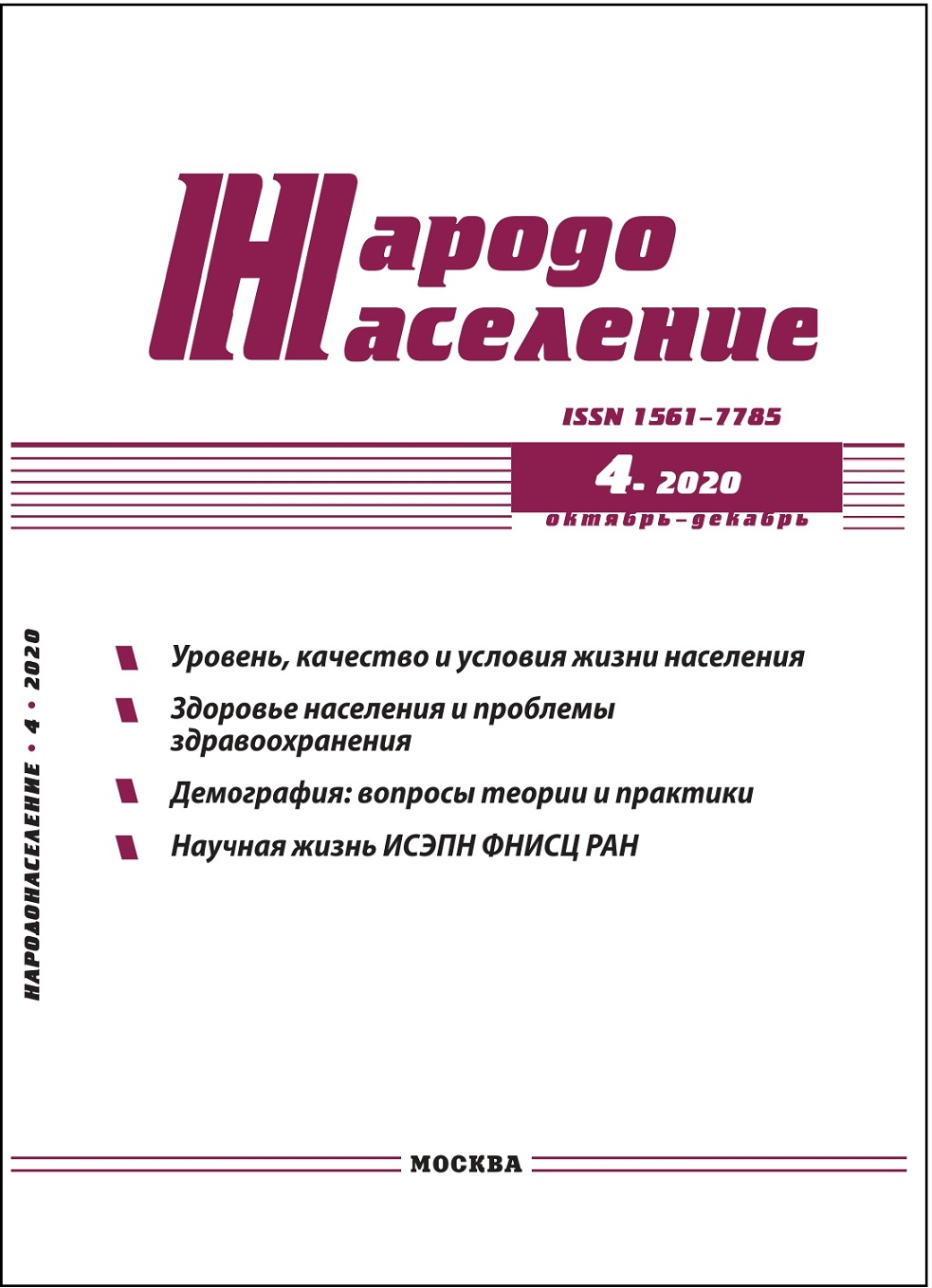Человеческий и научно-технический потенциал: корреляционный региональный анализ
Научная статья
Для цитирования
Федотов А. А. Человеческий и научно-технический потенциал: корреляционный региональный анализ // Народонаселение. 2020. Том 23. № 4. С. 61-70. DOI: https://doi.org/10.19181/population.2020.23.4.6
Аннотация
Развитие научно-технического потенциала в регионах России является важной задачей, без которой сложно представить конкурентоспособность отечественной экономики. С другой стороны, инновационное развитие тесным образом связано с такой социальной категорией, как человеческий потенциал. В статье представлены результаты корреляционного анализа между показателями научно-технического потенциала, отражающими ресурсную составляющую и результаты инновационной активности регионов, с одной стороны, и показателями человеческого потенциала, в частности, его физического аспекта, с другой. Полученные результаты подтвердили абсолютную положительную корреляционную связь между показателями научно-технического потенциала и позитивными факторами человеческого потенциала (продолжительность жизни, естественный прирост населения, распространение образования, посещение музеев и театров), а также отрицательную взаимосвязь с негативными факторами человеческого потенциала (уровень преступности, алкоголизма и наркомании). Выявлены наиболее чувствительные к значениям показателей человеческого потенциала факторы научно-технического потенциала: затраты на научные исследования и разработки, технологические инновации, число используемых передовых производственных технологий. Проведен более детальный корреляционный анализ с исследованием временных лагов отдельно по каждому региону между показателями научно-технического потенциала и тремя показателями физического аспекта человеческого потенциала: продолжительностью жизни, естественным приростом населения, распространением алкоголизма и наркомании.
Ключевые слова:
человеческий потенциал, научно-технический потенциал, регион, корреляция, продолжительность жизни, алкоголизм, наркомания
Литература
1. Федотов, А.А. Факторы научно-технического и человеческого потенциала регионов: поиск функциональных взаимосвязей / А. А. Федотов // Международный журнал гуманитарных и естественных наук. — 2020. — № 7. — С. 172-180. DOI: 10.24411/2500-1000-2020-10872
2. Рюмина, Е.В. Экологическая характеристика качества населения / Е. В. Рюмина // Экономика региона. — 2014. — № 3. — C. 82-90.
3. Федотов, А.А. Влияние экономических показателей на показатели человеческого потенциала населения / А. А. Федотов // Международный журнал гуманитарных и естественных наук. — 2019. — № 9-1. — С. 127-130. DOI: 10.24411/2500-1000-2019-11582
2. Рюмина, Е.В. Экологическая характеристика качества населения / Е. В. Рюмина // Экономика региона. — 2014. — № 3. — C. 82-90.
3. Федотов, А.А. Влияние экономических показателей на показатели человеческого потенциала населения / А. А. Федотов // Международный журнал гуманитарных и естественных наук. — 2019. — № 9-1. — С. 127-130. DOI: 10.24411/2500-1000-2019-11582
Статья
Поступила: 21.08.2020
Опубликована: 14.12.2020
Форматы цитирования
Другие форматы цитирования:
APA
Федотов, А. А. (2020). Человеческий и научно-технический потенциал: корреляционный региональный анализ. Народонаселение, 23(4), 61-70. https://doi.org/10.19181/population.2020.23.4.6
Раздел
УРОВЕНЬ, КАЧЕСТВО И УСЛОВИЯ ЖИЗНИ НАСЕЛЕНИЯ








